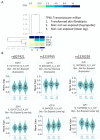A Possible Link of Genetic Variations in ER/IGF1R Pathway and Risk of Melanoma
- PMID: 32150843
- PMCID: PMC7084478
- DOI: 10.3390/ijms21051776
A Possible Link of Genetic Variations in ER/IGF1R Pathway and Risk of Melanoma
Abstract
The mechanism of gender disparity in cutaneous melanoma incidence remains unclear. Steroid hormones including estrogens have long been implicated in the course of melanoma, but the conclusion is controversial. Estrogen receptors (ERs) and insulin-like growth factor 1 receptor (IGF1R) show extensive crosstalk in cancer development, but how the ER/IGF1R network impacts melanoma is currently unclear. Here we studied the melanoma associations of selected SNPs from the ER/IGF1R network. Part of the International Genes, Environment, and Melanoma (GEM) cohort was used as a discovery set, and the Gene Environment Association Studies Initiative (GENEVA) dataset served as a validation set. Based on the associations with other malignant disease conditions, thirteen single nucleotide polymorphism (SNP) variants in ESR1, ESR2, IGF1, and IGF1R were selected for candidate gene association analyses. The rs1520220 in IGF1 and rs2229765 in IGF1R variants were significantly associated with melanoma risk in the GEM dataset after Benjamini-Hochberg multiple comparison correction, although they were not validated in the GENEVA set. The discrepancy may be caused by the multiple melanoma characteristics in the GEM patients. Further analysis of gender disparity was carried out for IGF1 and IGF1R SNPs in the GEM dataset. The GG phenotype in IGF1 rs1520220 (recessive model) presented an increased risk of melanoma (OR = 8.11, 95% CI: 2.20, 52.5, p = 0.006) in men but a significant opposite effect in women (OR = 0.15, 95% CI: 0.018, 0.86, p = 0.045). The AA genotype in IGF1R rs2229765 (recessive model) showed a significant protective effect in men (OR = 0.24, 95% CI: 0.07, 0.64, p = 0.008) and no effect in women. Results from the current study are warranted for further validation.
Keywords: cutaneous melanoma; estrogen receptors; gender disparities; genetic variants; insulin-like growth factor 1; insulin-like growth factor 1 receptor.
Conflict of interest statement
The authors declare no conflicts of interest. The funders had no role in the design of the study; in the collection, analyses, or interpretation of data; in the writing of the manuscript, or in the decision to publish the results.
Figures

Similar articles
-
Estrogen receptor beta (ESR2) polymorphisms in interaction with estrogen receptor alpha (ESR1) and insulin-like growth factor I (IGF1) variants influence the risk of fracture in postmenopausal women.J Bone Miner Res. 2006 Sep;21(9):1443-56. doi: 10.1359/jbmr.060605. J Bone Miner Res. 2006. PMID: 16939403
-
Maternal IGF1 and IGF1R polymorphisms and the risk of spontaneous preterm birth.J Clin Lab Anal. 2017 Nov;31(6):e22125. doi: 10.1002/jcla.22125. Epub 2017 Feb 18. J Clin Lab Anal. 2017. PMID: 28213921 Free PMC article.
-
Association of IGF1 and IGF1R gene polymorphisms with high myopia in a Han Chinese population.Ophthalmic Genet. 2017 Mar-Apr;38(2):122-126. doi: 10.3109/13816810.2016.1145699. Epub 2016 Apr 4. Ophthalmic Genet. 2017. PMID: 27044882
-
Polymorphisms in the IGF1 and IGF1R genes and children born small for gestational age: results of large population studies.Best Pract Res Clin Endocrinol Metab. 2008 Jun;22(3):415-31. doi: 10.1016/j.beem.2008.03.001. Best Pract Res Clin Endocrinol Metab. 2008. PMID: 18538283 Review.
-
Role of insulin-like growth factors in growth, development and feeding.World Rev Nutr Diet. 2013;106:60-5. doi: 10.1159/000342546. Epub 2013 Feb 11. World Rev Nutr Diet. 2013. PMID: 23428682 Review.
Cited by
-
+3179G/A Insulin-Like Growth Factor-1 Receptor Polymorphism: A Novel Susceptibility Contributor in Anti-Ro/SSA Positive Patients with Sjögren's Syndrome: Potential Clinical and Pathogenetic Implications.J Clin Med. 2021 Aug 31;10(17):3960. doi: 10.3390/jcm10173960. J Clin Med. 2021. PMID: 34501407 Free PMC article.
-
A Narrative Review of the Role of Estrogen (Receptors) in Melanoma.Int J Mol Sci. 2024 Jun 6;25(11):6251. doi: 10.3390/ijms25116251. Int J Mol Sci. 2024. PMID: 38892441 Free PMC article. Review.
-
Let's talk about sex: A biological variable in immune response against melanoma.Pigment Cell Melanoma Res. 2022 Mar;35(2):268-279. doi: 10.1111/pcmr.13028. Epub 2022 Feb 3. Pigment Cell Melanoma Res. 2022. PMID: 35076986 Free PMC article. Review.
-
Prior information-assisted integrative analysis of multiple datasets.Bioinformatics. 2023 Aug 1;39(8):btad452. doi: 10.1093/bioinformatics/btad452. Bioinformatics. 2023. PMID: 37490475 Free PMC article.
-
Sex and Gender Disparities in Melanoma.Cancers (Basel). 2020 Jul 7;12(7):1819. doi: 10.3390/cancers12071819. Cancers (Basel). 2020. PMID: 32645881 Free PMC article. Review.
References
-
- SEER Annual Report to the Nation 2019: National Trends in Rates of New Cancer Cases. [(accessed on 28 June 2019)];2019 Available online: https://seer.cancer.gov/report_to_nation/infographics/incidence.html.
-
- Liu-Smith F., Farhat A.M., Arce A., Ziogas A., Taylor T., Wang Z., Yourk V., Liu J., Wu J., McEligot A.J., et al. Sex differences in the association of cutaneous melanoma incidence rates and geographic ultraviolet light exposure. J. Am. Acad. Dermatol. 2017;76:499–505. doi: 10.1016/j.jaad.2016.08.027. - DOI - PMC - PubMed
-
- Yuan T.A., Lu Y., Edwards K., Jakowatz J., Meyskens F.L., Liu-Smith F. Race-, Age-, and Anatomic Site-Specific Gender Differences in Cutaneous Melanoma Suggest Differential Mechanisms of Early-and Late-Onset Melanoma. Int. J. Environ. Res. Public Health. 2019;16:908. doi: 10.3390/ijerph16060908. - DOI - PMC - PubMed
MeSH terms
Substances
Grants and funding
LinkOut - more resources
Full Text Sources
Medical
Research Materials
Miscellaneous

